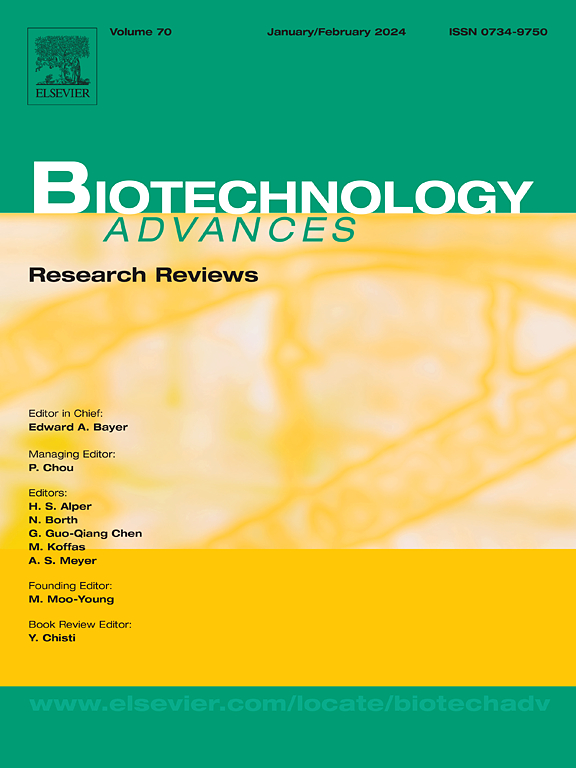Integration of structural study and machine learning to elucidate the RNA-SFs interaction atlas in eukaryotic cells
IF 12.1
1区 工程技术
Q1 BIOTECHNOLOGY & APPLIED MICROBIOLOGY
引用次数: 0
Abstract
Alternative splicing (AS) occupies a central position in plant growth and development, stress response, and animal growth and disease processes. Mutations in SF (splicing factor) trigger aberrant AS activities that disrupt these fine biological processes. Although cryo electron microscopy (cryoEM) technology has successfully revealed the fine structure of multiple spliceosomes, the dynamic and complex network of RNA-SFs remains to be fully resolved. This review summarizes the binding patterns of RNA and SFs through machine learning's powerful computational capabilities, the deep structural analysis using cryoEM, and experimental validation of RNA protein binding. Connect RNA protein interaction experiments, high-resolution imaging capabilities of cryoEM, and powerful analytical capabilities of machine learning to jointly construct a detailed RNA-SFs interaction map, forming a powerful toolkit. These knowledge help us better understand the complexity and working mechanisms of biological systems. This article not only has profound significance in revealing the molecular mechanisms of diseases and developing multi-target efficient drugs but also provides in-depth insights into molecular breeding and plant resistance enhancement.
整合结构研究和机器学习来阐明真核细胞中rna - sf相互作用图谱。
选择性剪接(AS)在植物生长发育、应激反应以及动物生长和疾病过程中占有重要地位。SF(剪接因子)的突变引发异常的AS活动,破坏这些精细的生物过程。尽管低温电子显微镜(cryoEM)技术已经成功地揭示了多个剪接体的精细结构,但RNA-SFs的动态和复杂网络仍有待充分解决。本文从机器学习的强大计算能力、低温电镜的深层结构分析以及RNA蛋白结合的实验验证等方面综述了RNA与sf的结合模式。将RNA蛋白相互作用实验、cryoEM的高分辨率成像能力、机器学习的强大分析能力结合起来,共同构建详细的RNA- sf相互作用图谱,形成强大的工具箱。这些知识帮助我们更好地理解生物系统的复杂性和工作机制。本文不仅对揭示病害的分子机制和开发多靶点高效药物具有深远意义,而且对分子育种和植物抗性增强具有深入的见解。
本文章由计算机程序翻译,如有差异,请以英文原文为准。
求助全文
约1分钟内获得全文
求助全文
来源期刊

Biotechnology advances
工程技术-生物工程与应用微生物
CiteScore
25.50
自引率
2.50%
发文量
167
审稿时长
37 days
期刊介绍:
Biotechnology Advances is a comprehensive review journal that covers all aspects of the multidisciplinary field of biotechnology. The journal focuses on biotechnology principles and their applications in various industries, agriculture, medicine, environmental concerns, and regulatory issues. It publishes authoritative articles that highlight current developments and future trends in the field of biotechnology. The journal invites submissions of manuscripts that are relevant and appropriate. It targets a wide audience, including scientists, engineers, students, instructors, researchers, practitioners, managers, governments, and other stakeholders in the field. Additionally, special issues are published based on selected presentations from recent relevant conferences in collaboration with the organizations hosting those conferences.
 求助内容:
求助内容: 应助结果提醒方式:
应助结果提醒方式:


